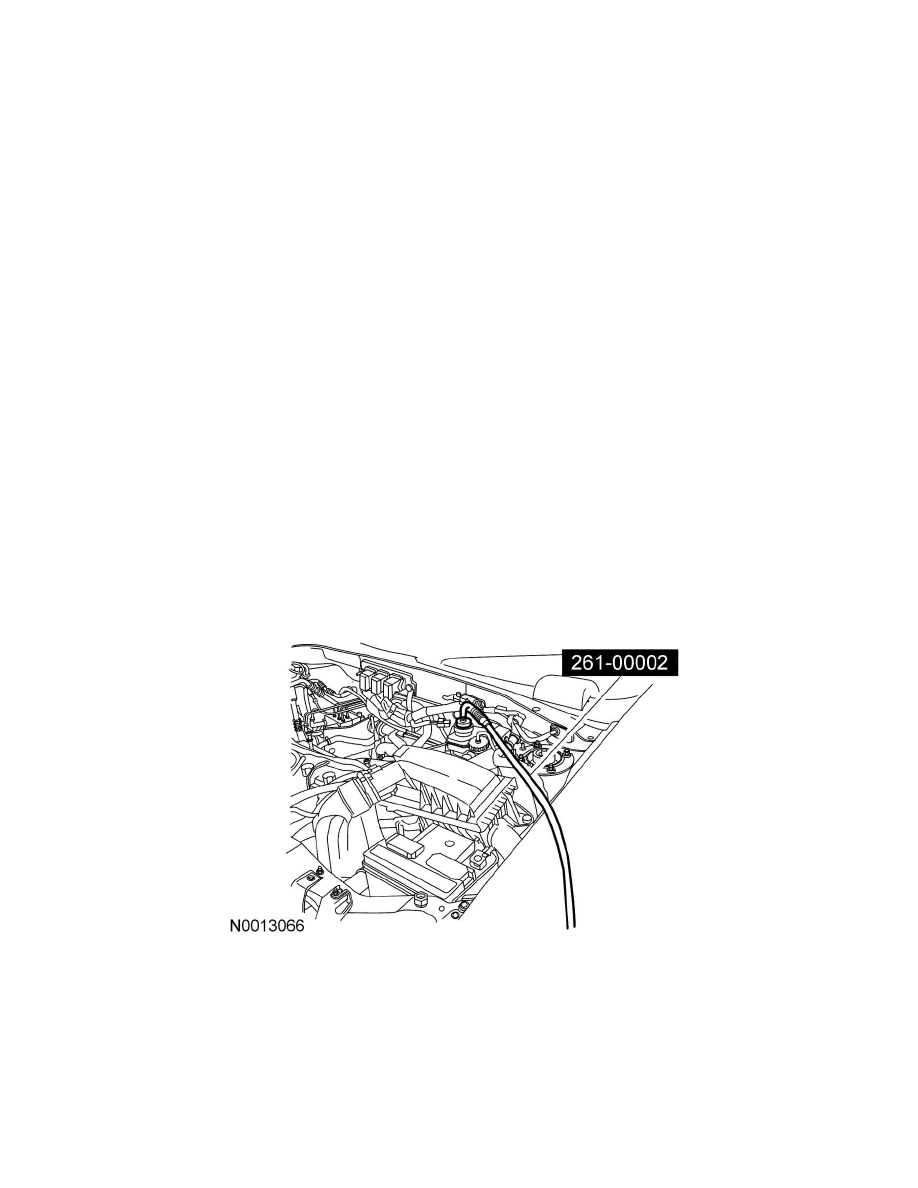Tribute 4WD L4-2.3L Hybrid (2008)

Brake Bleeding: Service and Repair
Brake System Bleeding
-
BRAKE SYSTEM BLEEDING - HYBRID
Service Bleed
WARNING: Do not use any fluid other than clean brake fluid meeting manufacturers specification. Additionally, do not use brake fluid that has been
previously drained. Following these instructions will help prevent system contamination, brake component damage and the risk of serious personal
injury.
WARNING: Carefully read cautionary information on product label. For EMERGENCY MEDICAL INFORMATION seek medical advice. For
additional information, consult the product Material Safety Data Sheet (MSDS) if available. Failure to follow these instructions may result in personal
injury.
CAUTION: Do not allow the brake master cylinder reservoir to run dry during the bleeding operation. Keep the master cylinder reservoir filled with the
specified brake fluid. Never reuse the brake fluid that has been drained from the hydraulic system. Damage to the brake system components may occur.
CAUTION: Brake fluid is harmful to painted and plastic surfaces. If brake fluid is spilled onto a painted or plastic surface, immediately wash it with
water.
CAUTION: Do not allow the master cylinder brake fluid to overflow from the reservoir. Brake fluid may damage the high-voltage components.
NOTE: Bleeding the hydraulic control unit (HCU) is required only when removing or installing the HCU, master cylinder or opening the tubes and
hoses to the HCU.
NOTE: When any part of the hydraulic system has been disconnected for repair or replacement, air can enter the system and cause spongy brake pedal
action. This requires bleeding of the hydraulic system after the repair is finished or after the new component is installed. The hydraulic system can be
bled manually or with pressure bleeding equipment.
NOTE: The ignition key must be in the ON position when checking the brake fluid level.
1. Clean all dirt from and remove the brake master cylinder filler cap and fill the brake master cylinder reservoir with clean, specified brake fluid.
2. Connect the pressure bleeder to the brake fluid reservoir.
-
Do not apply pressure to the hydraulic brake system at this time.
CAUTION: Do not apply pressure to the hydraulic brake system until prompted by the scan tool.
3. Install rubber drain hoses to the brake bleeder screws and submerge the open ends of the hoses in clean, specified brake fluid.
4. Connect the scan tool.
NOTE: Carrying out the service bleed function drives trapped air from the HCU. Subsequent bleeding removes the air from the brake hydraulic system
